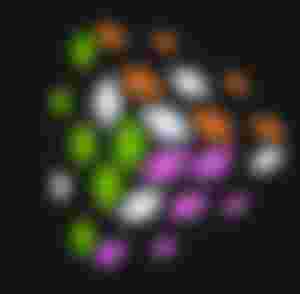Decoding the Cryptographic Symphony: In-Depth Exploration of Transformers Chain's Advanced Algorithm

In the expansive realm of blockchain technology, the Transformers Chain emerges as a beacon of innovation, operating as a fully decentralized public chain that invites universal participation. This immersive journey into its intricate design unveils a symphony of notable features, showcasing the prowess of the Transformers Chain in redefining the landscape of scalability and performance.At the heart of its revolutionary approach is the lightweight Raindrop Consensus Protocol, orchestrating parallel block processing by multiple block producers. This ingenious protocol, a hallmark of efficiency, contributes significantly to the chain's scalability and overall performance. The specialized chain structure further accentuates its prowess, creating an environment where anyone can seamlessly read, send transactions, confirm transactions, and actively participate in the transformative ecosystem.Diving deeper into the cryptographic foundations, the Transformers Chain harnesses a diverse set of algorithms, each meticulously chosen for specific cryptographic functions. The intricate dance of security and efficiency begins with the deployment of ED25519, a high-performance digital signature algorithm rooted in elliptic curve encryption (ECC) technology. Crafted in 2011, it stands as a testament to the chain's commitment to shorter signatures and public keys while upholding robust security and performance standards. Its widespread use in SSH keys, TLS certificates, and cryptocurrencies attests to its efficacy in enhancing transaction verification speed without compromising security.Moving through the cryptographic tapestry, the RSA algorithm, born in 1978, emerges as a venerable force in asymmetric encryption. While its strength lies in the formidable challenge of factorizing large numbers, the intricacies of modular exponentiation introduce considerations of slower encryption and decryption speeds. The need for longer keys for enhanced security further adds layers of complexity, bringing forth the critical aspects of key management and transmission overhead.Enter the realm of Elliptic Curve Crypto, where the Transformers Chain embraces a paradigm shift in cryptographic methodology. Built on the discrete logarithm problem between points on an elliptic curve and integers, this algorithm offers higher security with lower computational complexity when compared to traditional RSA and DSA counterparts.Intricately woven into the cryptographic fabric is the Verifiable Random Function (VRF), a creation of Silvio Micali and colleagues in 1999. Functioning as a verifiable pseudo-random function, VRF generates a random output based on the holder's private key. What sets it apart is its ability to provide a verifiable proof to others, enabling verification of the output's correctness using the corresponding public key, all without revealing the private key.Completing this cryptographic ensemble is SHA-256, a stalwart in the world of encryption with its 256-bit encrypted hash function. Belonging to the esteemed SHA-2 series, this algorithm plays a pivotal role in generating hash
